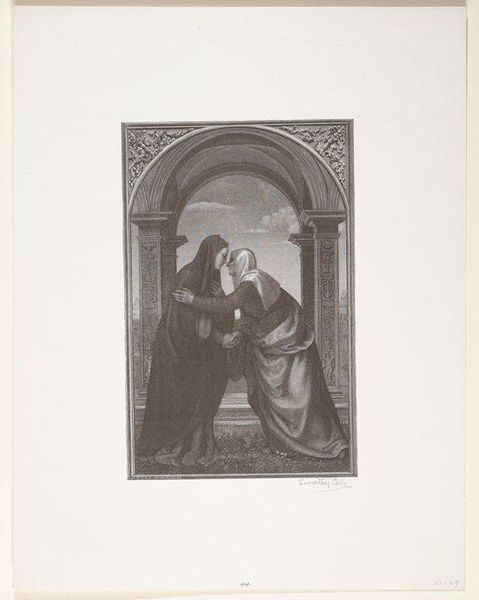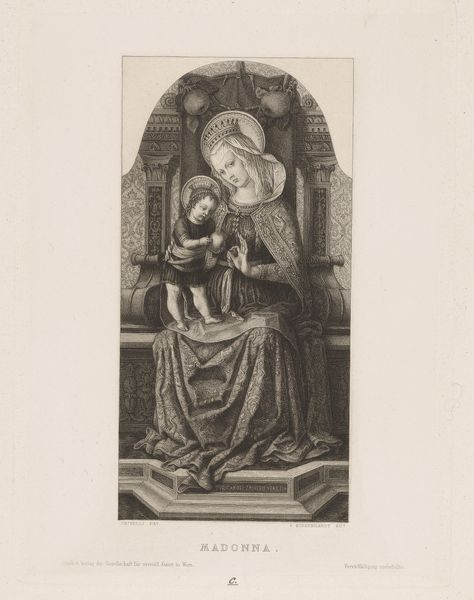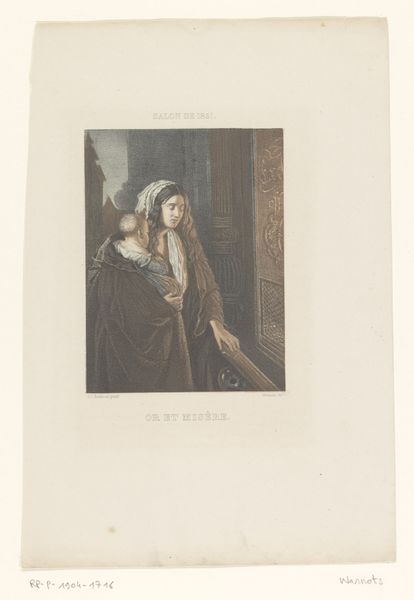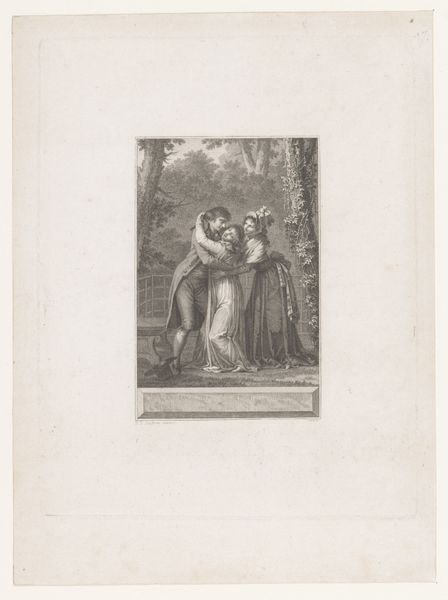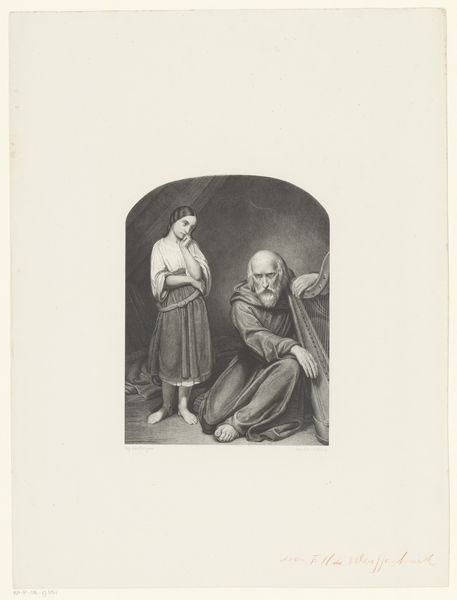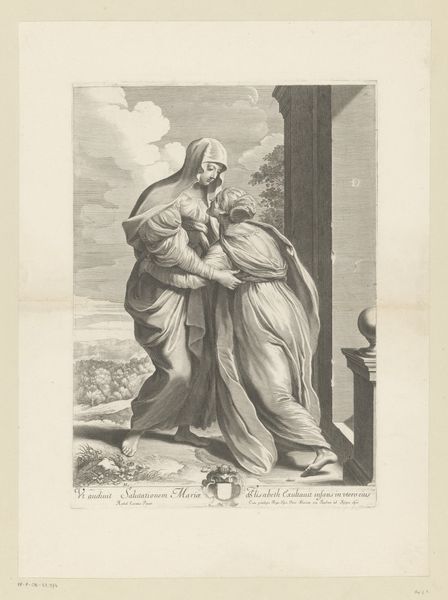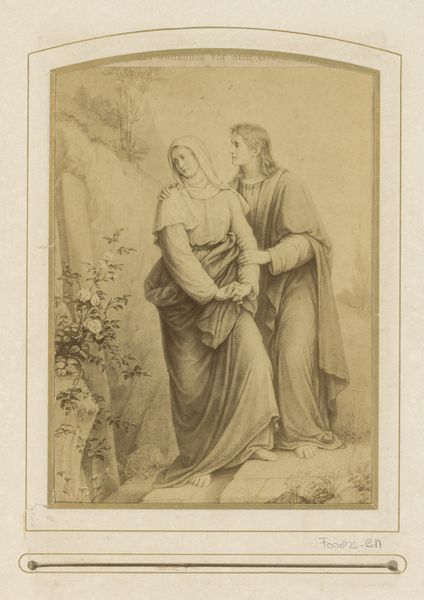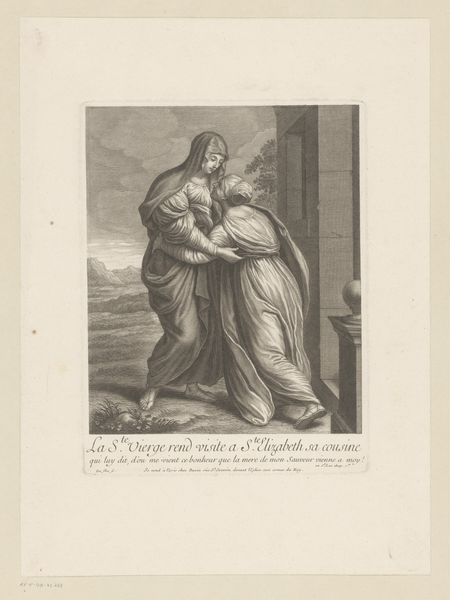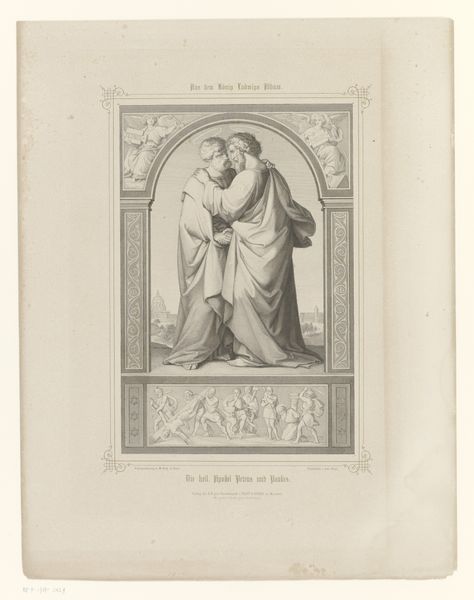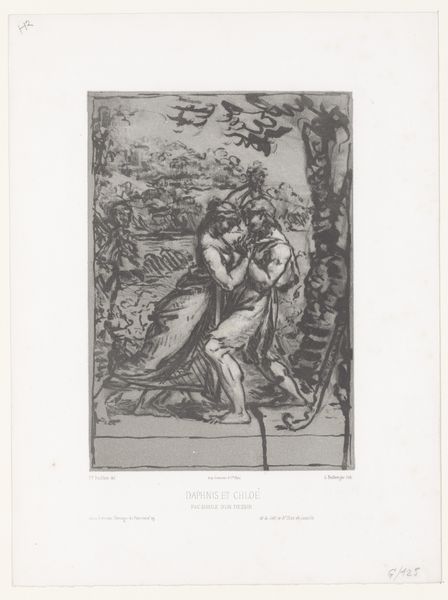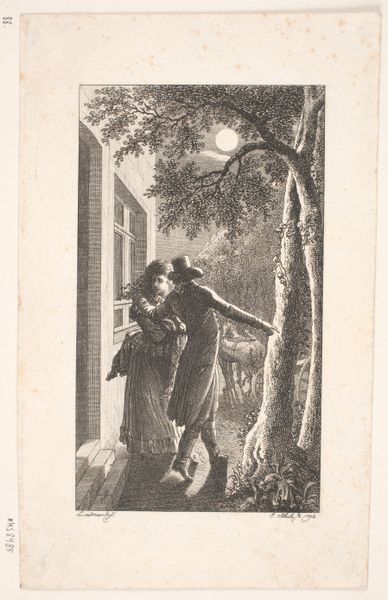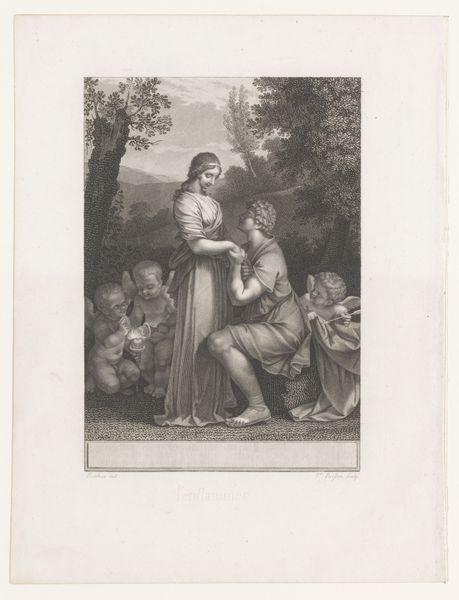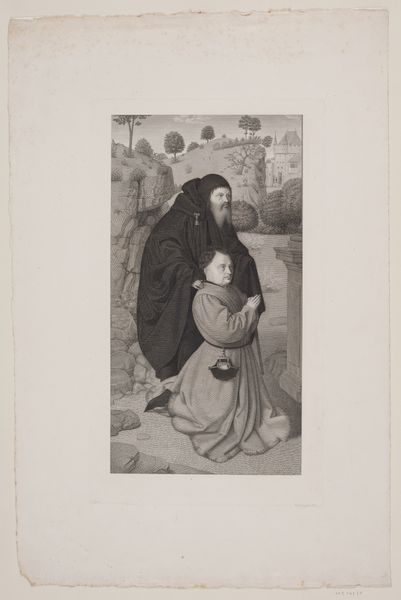
print, engraving
#
portrait
# print
#
figuration
#
historical photography
#
19th century
#
line
#
portrait drawing
#
history-painting
#
academic-art
#
graphite
#
engraving
#
realism
Dimensions: height 380 mm, width 256 mm
Copyright: Rijks Museum: Open Domain
Editor: Here we have François de Meersman’s "Visitatie van Maria en Elisabeth," created sometime between 1840 and 1869. It’s an engraving that depicts a tender moment. What’s immediately striking is how the figures seem to offer each other support. What do you see in this print? Curator: Beyond the obvious tenderness, I see a visual representation deeply rooted in the socio-political landscape of the 19th century. Think about it: religious narratives were often used to subtly reinforce or, indeed, question the status quo. This particular scene, the Visitation, traditionally signifies recognition and mutual support between women, but here I see a focus on the vulnerability of the figures. How do we interpret their lowered gazes, the sheltering arch, within the then-emerging discourse around women’s roles? Is it reverential, or is there a hidden commentary on the constraints placed upon women? Editor: That’s interesting, I hadn’t thought of it that way. I was focused on the artistic elements – the soft lines and the classical architectural backdrop. Curator: The academic art style shouldn’t distract us from considering its context. The composition, the very act of portraying women in this intimate setting… it invites us to consider the private sphere versus the limited public roles afforded to women. What kind of message do you think a 19th-century audience would have received from this intimate scene, versus something displayed in the public sphere, let’s say? Editor: Perhaps it spoke to the limited options available to women, confining them to private acts of care? Viewing it now, it highlights the power of female relationships within restrictive environments. Curator: Precisely. This print, through its subject and style, becomes a window into the complex dialogue around gender and power during the 19th century. Editor: Thank you, that offers such a different, richer reading of this piece.
Comments
No comments
Be the first to comment and join the conversation on the ultimate creative platform.
